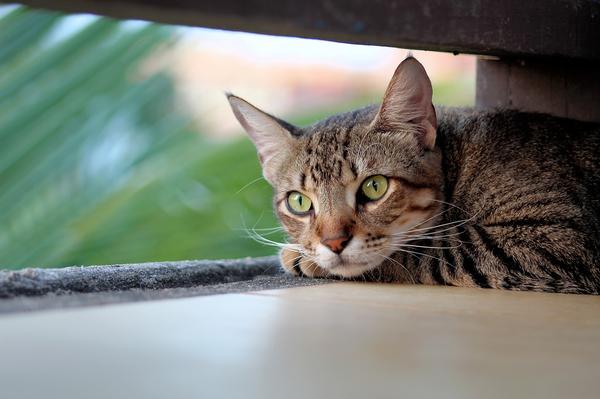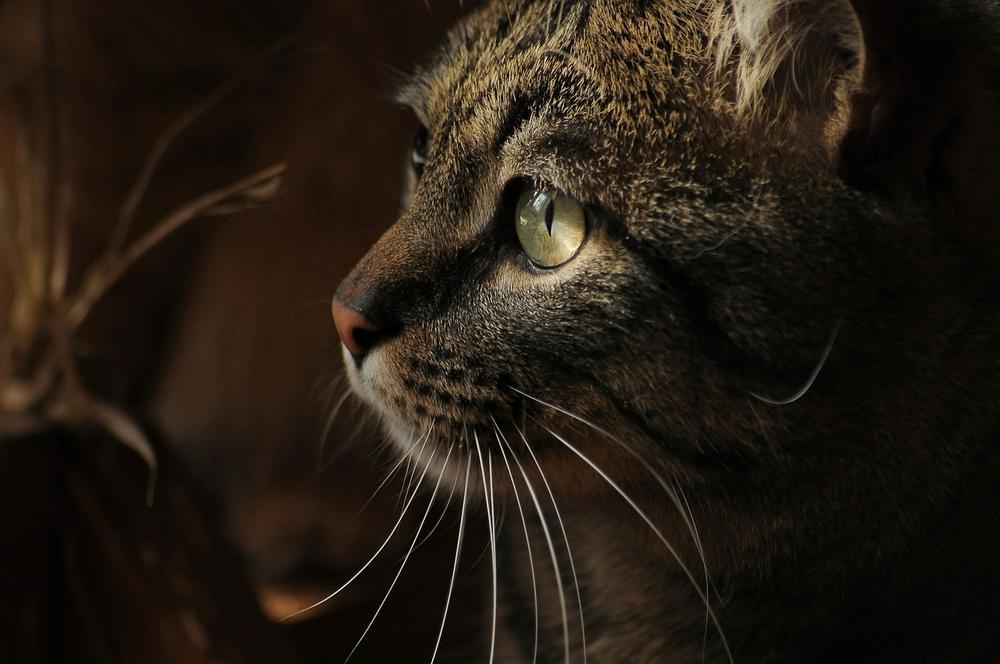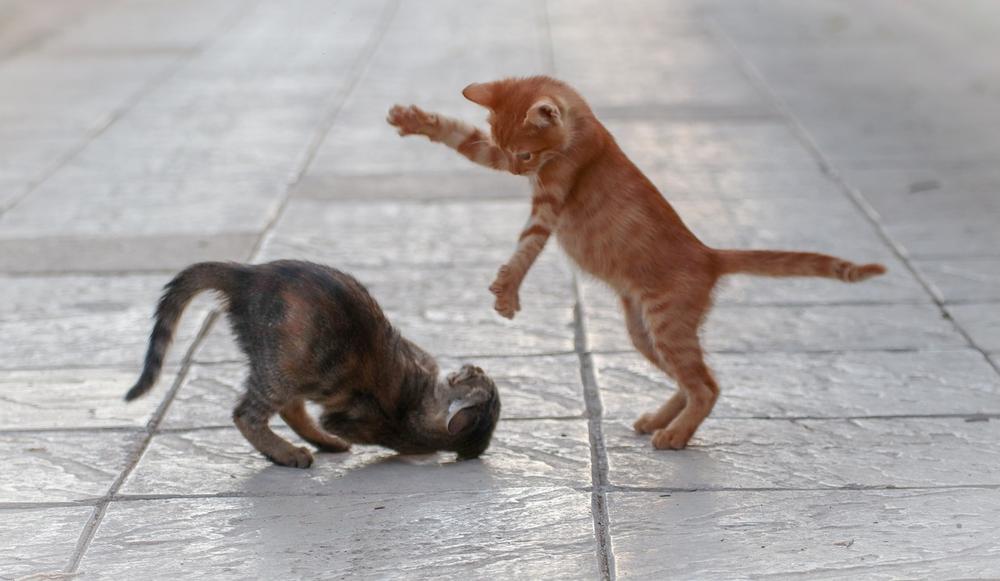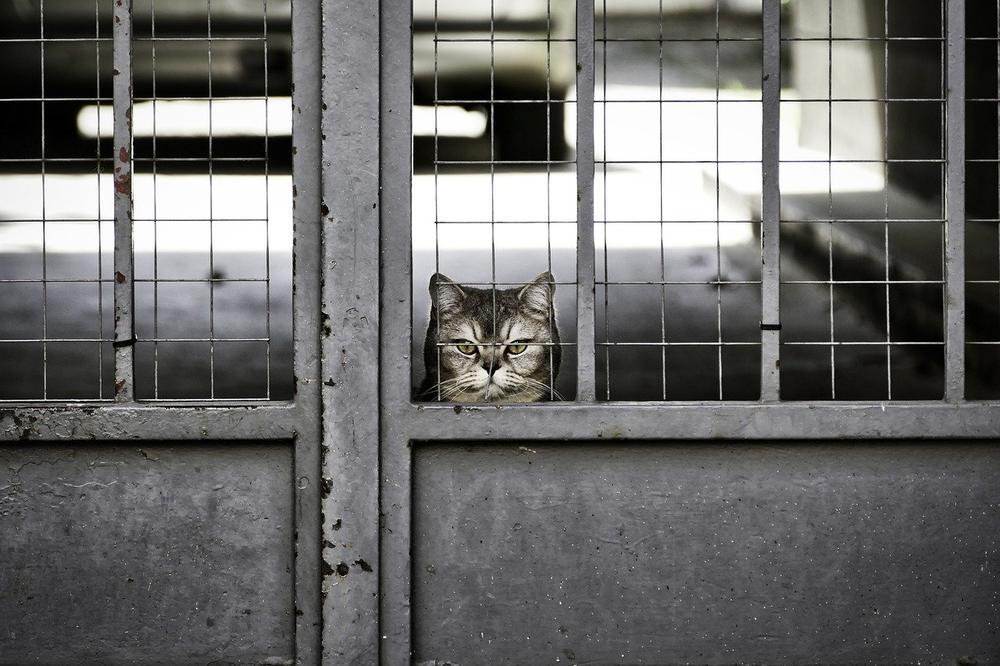Why Does My Cat Hate Other Cats? (And How To Fix It)

Are you tired of your cat causing chaos whenever another feline crosses their path?
Do you feel like throwing up your hands and giving up on ever understanding your furry friend's aggressive behavior? 😕
I hear you.
It's frustrating, isn't it?
Your home turns into a battleground, and your peaceful coexistence dreams shatter.
But fear not, my friend.
Let's dive deep into the mysterious world of feline aggression together.
Buckle up, because it's time to uncover the truth.
Understanding and Resolving Aggression in Lonely, Territorial Cats
Lonely and territorial cats can be a handful.
Certain things can make them aggressive, so you need to understand what those triggers are and how to handle their aggression.
First off, having outdoor cats in the neighborhood can make indoor cats feel threatened and become territorially aggressive.
So if you notice this behavior, that might be why.
Cats are naturally social animals, but without proper socialization, they may develop aggression towards other cats.
Changes in their environment or routine can also ramp up their aggression levels. Keeping things as stable as possible is key.
You should know that cats are quite territorial.
They have their own space, and any new cats trying to come in can provoke aggression.
Keep in mind that there could be underlying health issues contributing to their aggression.
Brain disorders, liver disease, epilepsy, poor hearing or sight, pain-inducing diseases, and hormone imbalances can all play a role.

If the aggression is extreme, you might need the help of professional behaviorists.
They can use techniques like desensitization, counter-conditioning, gradual exposure to fearful situations, treats for rewards, and even medication to tackle fear aggression.
Redirecting play aggression towards appropriate toys and teaching good play behavior is another effective approach.
Using synthetic pheromones can also reduce anxiety in cats.
But remember, if your cat has territorial aggression, medication may be necessary, and physical punishment is always a no-go.
So, there you have it!
Understanding and resolving aggression in lonely, territorial cats doesn't have to be overwhelming.
With the right knowledge and techniques, you can help your furry friend find their inner zen. ✨
But how can you tell if your cat is displaying aggression or fear?
Understanding cat body language is crucial for recognizing these signs and effectively addressing their behavior.
Let's dive into the fascinating world of feline communication!
Understanding Cat Body Language
Recognizing cat body language is crucial for a peaceful cat household. Pay attention to piloerection (raised fur) as it signifies fear or aggression. Watch for signs like raised hackles, fluffed tails, and changes in posture. Play aggression, on the other hand, involves stalking, chasing, and playfully biting or scratching.
Knowing how to interpret cat body language is vital for maintaining a peaceful and harmonious household of cats.
Get familiar with the term "piloerection", which simply refers to raised fur.
You should pay attention to this because it indicates fear or aggression in cats. Picture yourself with goosebumps - that's what piloerection looks like on cats.
Observe closely when your furry friends interact to catch any signs of aggression.
Cats can quickly escalate from fear to aggression, so you should understand the warning signals.
Keep an eye out for aggressive behaviors such as raised hackles, fluffed tails, ears pressed against their heads, changes in posture, growling, hissing, urine spraying, and use of teeth and claws.
Fear aggression displays itself differently with hissing, spitting, growling, piloerection, flattened ears, a low or crouched body position, and dilated pupils being common signs. They might even resemble mini Halloween cats.

But don't forget about play aggression.
Stalking, chasing, pouncing, biting, and scratching are all part of the feline fun.
These antics are harmless and just their way of having a good time, so enjoy watching them too!
Understanding cat body language is paramount for maintaining harmony among your kitties.
But I know what you're thinking - what about black cats? Are they more aggressive? Well, I won't spoil the surprise here, but I've written a blog post that dives deep into this intriguing topic.
If you're curious and want to learn more, I invite you to check out my article Are Black Cats More Aggressive.
It's a fascinating read that may just shed some light on the correlation between black cat fur color and aggression.
Enjoy!
Properly Introducing Cats to Each Other
Introducing cats to each other can be tricky. Here's what you need to do:
- Set up separate spaces for each cat, including litter boxes, food bowls, and beds.
- Start with short supervised sessions together and gradually increase the time they spend with each other.
- Reward them with treats or praise when they're calm around each other.
- Give them vertical spaces like cat trees or shelves so they each have their own territory and a place to hide if necessary.
- Use scent-swapping techniques to help them get used to each other's smell before physical contact.
- Allow them to see each other through a baby gate or cracked door without direct access.
- Consider using cat pheromone diffusers like Feliway to create a calming atmosphere during the introduction process.
- Play with them regularly using interactive toys to redirect any negative energy and let them engage in natural behavior.
By following these steps, you'll help your cats adjust to each other and create a peaceful home. 😺
And now, I want to delve deeper into the specific personality traits that can contribute to intercat aggression and how understanding these traits can help us address the issue...
Personalities and Temperaments in Cats
Excessive dominance or timidity can lead to intercat aggression among cats.

Understanding these specific traits in your feline companions provides insights into their behavior.
The diversity of feline personalities means not every cat is compatible with all personality types. These personality differences can be the cause of dislike between certain cats.
The Role of Past Experiences in Cat Aggression
Traumatic experiences can cause long-lasting aggression
You know, cats can be sensitive beings, just like us.
And when they go through something really scary, it can have a lasting effect on them.
Imagine if you were attacked by another cat.
Scary, right?
Well, for cats, going through something like that can make them fearful and aggressive towards other felines for a long time.
Just like we carry our past experiences with us, cats do too.
So if your furry friend has been through something traumatic, you must be aware of any signs that might indicate their previous trauma.
Understanding what triggers them and finding ways to help them based on those triggers is really important.
Pay close attention now because this is crucial. When kittens are really young, they have a period where they learn and remember things very well.
This period greatly shapes how they behave when they grow up, especially when it comes to getting along with other cats.
If a cat didn't get enough socialization during their early months, they might struggle to get along with other cats when they're older.
It's kind of like missing out on an important part of their growth and development.
Cats that were separated from their littermates too early may become resistant to new experiences with other cats.
The role of past experiences and other factors
I hate to break it to you, but negative experiences or trauma aren't great for cats either. Just like with humans, those things can really influence a cat's behavior towards other felines.
But here's something that might surprise you:
Spaying or neutering your cat can actually help create a more peaceful home.
Who would've thought, right?
Oh, and don't forget that sudden changes in your cat's behavior towards other cats could be a sign of an underlying health issue.
So, it's always a good idea to keep an eye out for any unusual shifts in how they interact with other cats.
And here's one more thing:
Certain medications, like anesthesia or corticosteroids, can contribute to aggression in cats.
If your cat starts acting worse after taking these meds, it's a good idea to talk to your vet about it.
All in all, a cat's interactions with other cats are shaped by their past experiences. Understanding and addressing those experiences can really make a difference in improving their social behavior.
Understanding the Complexity of Cat Aggression
Summary:
- Cats may develop aggression towards other cats if not properly socialized.
- Changes in environment or routine can lead to increased aggression.
- Cats are territorial and may display aggression towards new cats.
- Underlying health conditions can cause aggression in cats.
- Redirected aggression may occur when a cat is unable to respond to the original target.
- Professional behaviorists may be necessary for extreme cases of cat aggression.
- Techniques such as desensitization, counter-conditioning, and medication can address fear aggression.
- Redirecting play aggression onto toys and teaching proper play behavior can help.
- Synthetic pheromones like Feliway® can decrease anxiety in cats.
- Medication may be required for territorial aggression, and physical punishment should be avoided.
- Understanding cat body language is important for recognizing signs of aggression.
- Aggressive behaviors include raised hackles, fluffed tails, growling, hissing, urine spraying, and the use of teeth and claws.
- Fear aggression is characterized by hissing, spitting, growling, pilo-erection, flattened ears, low body position, and dilated pupils.
- Play aggression involves stalking, chasing, pouncing, biting, and scratching.
- Properly introducing cats to each other requires time and patience.
And that wraps up today's article.
If you wish to read more of my useful articles, I recommend you check out some of these: Why Does My Cat Want Me to Watch Her Eat, Why Do Female Cats Roll Around After Mating, and Do Cats Get Clingy When You Are Pregnant
Talk soon,
-Sarah Davis